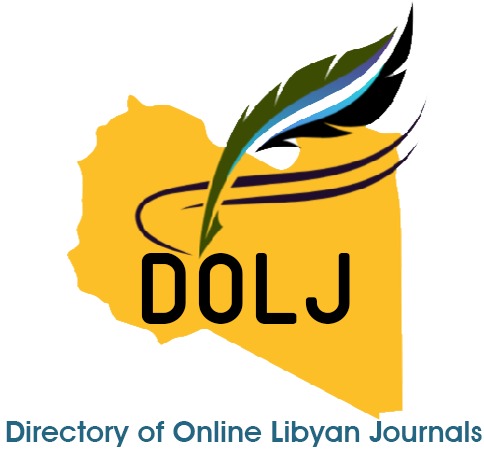Dimension and morphological variation of the sella turcica in Libyan adults in Benghazi using CT scan
DOI:
https://doi.org/10.37376/benunivmedj.v1i1.7138Keywords:
sella turcica, variation, hypophysial fossa, pituitary glandAbstract
Background: The sella turcica is a significant anatomical structure used to assess sellar and parasellar pathologies, as well as in orthodontic procedures. Normal sellar anatomy varies significantly between different populations. Currently, there is insufficient knowledge about the sella turcica among the Libyan community.
Aim: The aim of this study is to evaluate and assess the correlation between sellar dimensions and morphological variants with gender.
Results: Data from computed tomography of 146 Libyan adults (66 females and 80 males) aged from 18 to 70 years was analyzed using SPSS. The mean length, depth, and anteroposterior diameter were 9.924±2.001mm, 8.575±1.651mm, and 12.502±1.912mm, respectively. The round shape was the most common, found in 54.8% of subjects, followed by oval (32.2%) and flattened (13%). When assessing whether gender plays a role in the size and shape of the sella turcica, there was no statistically significant difference between males and females in relation to all sellar measurements and shapes.
Conclusion: The results of this study can be used as a reference standard for the Libyan population in various medical specialties, including radiology, neurosurgery, forensic medicine, and orthodontics. This can aid in the early diagnosis of pathologies, leading to better management and follow-up. Additionally, the findings can serve as a basis for further international research investigations.
References
R. Drake, Vogl W, A. Mitchell, Gray’s Anatomy for Students. (Elsevier Health Sciences 4th ed.;1064 (2019).
J. E. Hall, Guyton and hall textbook of medical physiology (13th ed.). W B Saunders (2015).
I. Kjær, Sella turcica morphology and the pituitary gland—a new contribution to craniofacial diagnostics based on histology and neuroradiology. The European Journal of Orthodontics. 37 (1):28-36 (2012).
J. burns et al., Expert panel on neurologic imaging: Acr appropriateness criteria® neuroendocrine imaging. Journal of the American College of Radiology: JACR. 16 (5S): S161-S173 (2019).
H. P. Sathyanarayana et al., Sella turcica-Its importance in orthodontics and craniofacial morphology. Dental Research Journal. 10 (5):571-575 (2013).
G. K. Shrestha, The morphology and bridging of the sella turcica in adult orthodontic patients. BMC Oral Health. 18 (1) (2018).
E. A. Alkofide The shape and size of the sella turcica in skeletal Class I, Class II, and Class III Saudi subjects. European journal of orthodontics, 29 (5), 457–463 (2007).
F. K. Muhammed et al., Morphology, Incidence of Bridging, Dimensions of Sella Turcica, and Cephalometric Standards in Three Different Racial Groups. Journal of Craniofacial Surgery.30(7):2076-2081 (2019).
Silverman, F. N. (1957). Roentgen standards fo-size of the pituitary fossa from infancy through adolescence. American Journal of Roentgenology, Radium Therapy, and Nuclear Medicine, 78(3), 451-460. PMID: 13458563.
J. D. Camp, The Normal and Pathologic Anatomy of the Sella Turcica as Revealed at Necropsy. Radiology.1(2):65-73 (1923
Olarinoye-Akorede, S. A., Ogungbemi, A. O., & Adetayo, F. O. (2017). Computed tomography evaluation of sella turcica dimensions and relevant anthropometric parameters in an African population. Folia Morphologica, 76(3), 421-427. https://doi.org/10.5603/FM.a2017.0025
H. A. Hasan et al., 3DCT Morphometric Analysis of Sella Turcica in Iraqi Population. Journal of Hard Tissue Biology. 25 (3):227-232 (2016).
Y. Yasa et al., Morphometric Analysis of Sella Turcica Using Cone Beam Computed Tomography. Journal of Craniofacial Surgery. 28 (1): e70 - e74 (2017).
G Abebe et al., Morphometric Analysis of the Sella Turcica and its Variation with Sex and Age among Computed Tomography Scanned Individuals in Soddo Christian Hospital, Ethiopia. international journal of anatomy radiology and surgery. Published online (2021).
Hossain, M. G., Shekhar, H. U., Datta, P. G., & Inngjerdingen, K. T. (2016). 3D CT study of morphological shape and size of sella turcica in Bangladeshi population. Anatomy & Cell Biology, 49(4), 238-244.
Buzaaieh, H. M., Taha, M. M., & Esmail, A. E. (2023). A study of the morphological variation in the shape and size of sella turcica in the population of Benghazi. Research Square.
C. R. Ruiz et al., Sella turcica morphometry using computed tomography. European journal of anatomy, 12, 47-50 (2020).
S. Axelsson et al., Post-natal size and morphology of the sella turcica. Longitudinal cephalometric standards for Norwegians between 6 and 21 years of age. European Journal of Orthodontics. 26(6), 597-604 (2004).
A. D. Zagga et al., Saidu Description of the normal variants of the anatomical shapes of the sella turcica using plain radiographs: experience from Sokoto, Northwestern Nigeria. Annals of African Medicine. 7(2), 77-81 (2008).

Downloads
Published
How to Cite
Issue
Section
License
Copyright (c) 2024 Benghazi University Medical Journal

This work is licensed under a Creative Commons Attribution-NonCommercial-NoDerivatives 4.0 International License.
Copyright©2024University of Benghazi.
This open Access article is Distributed under a CC BY-NC-ND 4.0 license








 Copyright
Copyright


